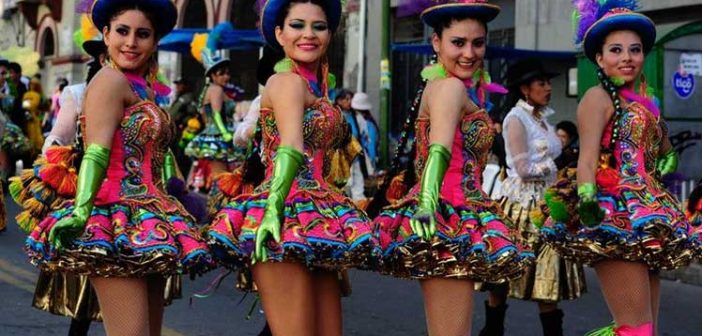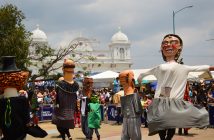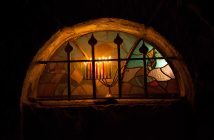The Bolivian ‘Gran Poder’ festival was held in La Paz recently, with an outpouring of colour, extravagance and rhythm from tens of thousands of participating dancers and musicians in one of Bolivia’s most popular traditions, which is seeking UNESCO World Heritage recognition.
The folkloric parade, which began first thing in the morning, was led by a group of Inca elders. They were followed by brothers holding signs bearing messages against domestic violence, later followed by the celebration.
Grouped into 72 different fraternities, more than 40,000 dancers (the majority of whom were Aymaran) and 7,000 musicians walked the 5-kilometre parade route performing various Bolivian dances, starting from the Garita de Lima neighbourhood in the North West of the city, and ending in central La Paz.
The participants dance in honour of Señor Jesús del Gran Poder [Lord Jesus of the Great Power], the patron saint of the festival, promising to dance for three whole years if he greets their wishes.
The festival, also known as the Andes Annual Celebration, is an expression of the “central characteristics of La Paz: cultural diversity, interculturality, the social fabric that is created around faith and our cultures” according to Andrés Zaratti, Municipal Culture Secretary, in an interview with Efe.
This edition, which was the 45th, has created high expectations. At the end of the year, the United Nations Educational, Scientific and Cultural Organization (UNESCO) will give its verdict on the Bolivian authorities’ application for Intangible World Heritage status.
“This is why we are currently fighting a campaign for UNESCO to accept our application […] and this makes us prouder and stronger than ever”, claimed Zaratti.
With this in mind, a decision was made to enact a stricter control on the Gran Poder Folkloric Costume Association, prohibiting dancers from using elements that ruin their costumes or which are not part of their outfits, such as sunglasses, neckerchiefs and hairbands.
Individuals under the age of 12 were not allowed to participate, with these children having the opportunity to dance in their own mini Gran Poder festival last April by means of celebrating the Bolivian Children’s Day.
The Gran Poder festival dates back to the start of the 20th century, with the holding of indigenous festivals in populated neighbourhoods; however, it became a folkloric street display around 1940.
The parade is characterised by the Morenada dance, which is popular among Aymaran people as it allows them to show off their economic power through luxurious masks, suits, dresses and jewels.
One of the figures of this dance is the emblematic and elegant chola paceña: an Aymaran woman with long hair tied into two plaits, who shows off her finery in this celebration. This includes a traditional dark bowler hat, overskirt and blouse, as well as a bright-coloured blanket and precious jewels.
The men, referred to as “morenos”, wear heavy suits embroidered with sequins, pearls and beads and masks crowned with enormous feathers, which move from side-to-side in line with the dance’s slow and rhythmic beat.
Besides the Morenada, other dances are also exhibited. Such examples include the joyous kullaguada, the energetic tinku, the rhythmic suri sicuri and the waca waca, a satirical interpretation of the running of the bulls that was popularised in the Bolivian high plates from the colony.
The groups are accompanied by well-dressed musical bands who show off their own choreographies.
The festival’s power is evident through the money that it raises, with the La Paz mayor calculating that the festival will have raised 120 million dollars this year.
This marks a 130 per cent increase over the 52 million dollars raised in 2012, according to the town council.
Zaratti explained how the money raised doesn’t just entail the money generated by the parade itself, but “everything affected by the festival”, including activities held as part of the run-up to the main event and an awards ceremony for the best fraternities, held days after the parade.






